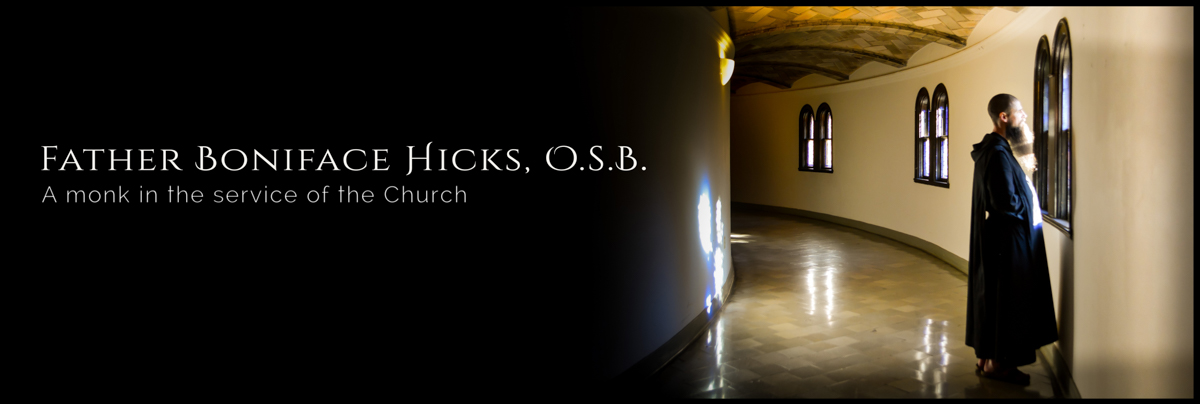A Reading from the Book of Genesis:
In the beginning God created the heavens and the earth. The earth was without form and void, and darkness was upon the face of the deep; and the Spirit of God was moving over the face of the waters.
And God said, “Let there be light”; and there was light. And God saw that the light was good; and God separated the light from the darkness. God called the light Day, and the darkness he called Night. And there was evening and there was morning, one day. (Gen 1:1-5)
Pope Benedict XVI’s Easter Vigil homily 2012:
What is the creation account saying here? Light makes life possible. It makes encounter possible. It makes communication possible. It makes knowledge, access to reality and to truth, possible. And insofar as it makes knowledge possible, it makes freedom and progress possible. Evil hides. Light, then, is also an expression of the good that both is and creates brightness. It is daylight, which makes it possible for us to act. To say that God created light means that God created the world as a space for knowledge and truth, as a space for encounter and freedom, as a space for good and for love. Matter is fundamentally good, being itself is good. And evil does not come from God-made being, rather, it comes into existence only through denial. It is a “no”.
At Easter, on the morning of the first day of the week, God said once again: “Let there be light”. The night on the Mount of Olives, the solar eclipse of Jesus’ passion and death, the night of the grave had all passed. Now it is the first day once again – creation is beginning anew. “Let there be light”, says God, “and there was light”: Jesus rises from the grave. Life is stronger than death. Good is stronger than evil. Love is stronger than hate. Truth is stronger than lies. The darkness of the previous days is driven away the moment Jesus rises from the grave and himself becomes God’s pure light. But this applies not only to him, not only to the darkness of those days. With the resurrection of Jesus, light itself is created anew. He draws all of us after him into the new light of the resurrection and he conquers all darkness. He is God’s new day, new for all of us.
But how is this to come about? How does all this affect us so that instead of remaining word it becomes a reality that draws us in? Through the sacrament of baptism and the profession of faith, the Lord has built a bridge across to us, through which the new day reaches us. The Lord says to the newly-baptized: Fiat lux – let there be light. God’s new day – the day of indestructible life, comes also to us. Christ takes you by the hand. From now on you are held by him and walk with him into the light, into real life. For this reason the early Church called baptism photismos – illumination.
Reflection:
 Saint Louis de Montfort reminded us that Baptism is an entrance into Mary’s womb. That is the place where we learn a new logic, where we are enlightened as to the real power, providence and plan of God. It is where we first draw close to Christ, like a twin with Him in the womb and we are formed with Him by the Holy Spirit and we become another Christ. Have I allowed the logic of God to be fully formed in me? Do I allow a new light from God to rise up in my mind and heart? Do I believe that, “Life is stronger than death, good is stronger than evil, love is stronger than hate, truth is stronger than lies?” Will I take Christ’s Hand again, as I once did in Baptism, and allow myself to be illumined by the light of His Love? Let us do that especially by making a Profession of Faith and recite the Creed.
Saint Louis de Montfort reminded us that Baptism is an entrance into Mary’s womb. That is the place where we learn a new logic, where we are enlightened as to the real power, providence and plan of God. It is where we first draw close to Christ, like a twin with Him in the womb and we are formed with Him by the Holy Spirit and we become another Christ. Have I allowed the logic of God to be fully formed in me? Do I allow a new light from God to rise up in my mind and heart? Do I believe that, “Life is stronger than death, good is stronger than evil, love is stronger than hate, truth is stronger than lies?” Will I take Christ’s Hand again, as I once did in Baptism, and allow myself to be illumined by the light of His Love? Let us do that especially by making a Profession of Faith and recite the Creed.
Profession of faith (I believe in one God…)
Veni Sancte Spiritus
Ave Maris Stella or Sub Tuum Praesidium
Litany of Penance or Radiating Christ
Prayer of Entrustment to the Womb of Mary


















